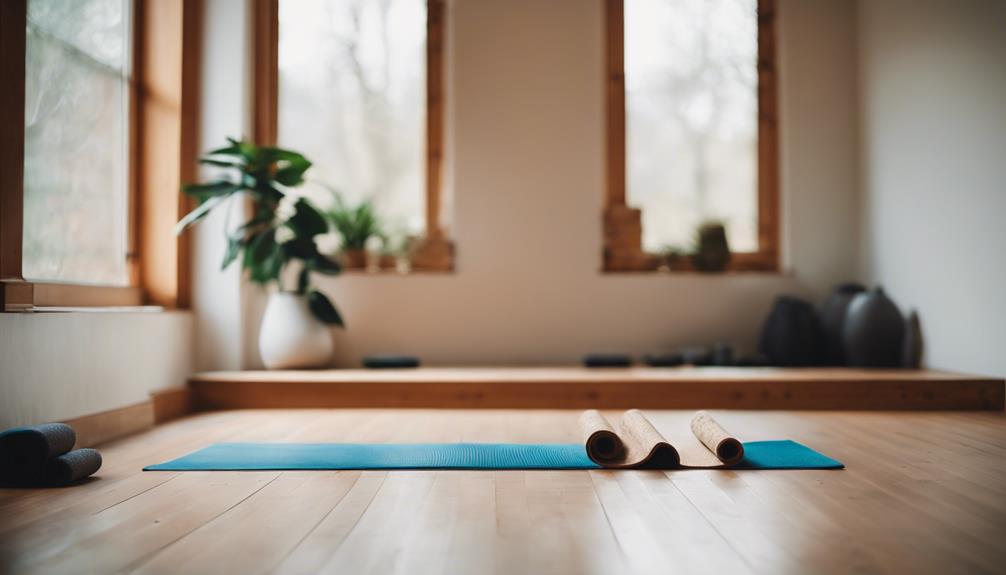What Yoga Poses To Avoid With Osteoporosis

Osteoporosis is a condition characterized by weakened bones, making individuals more susceptible to fractures and injuries. While yoga can be an excellent form of exercise for enhancing flexibility, balance, and overall well-being, certain poses may not be safe for those with osteoporosis. In this blog post, we will discuss what yoga poses to avoid with osteoporosis, ensuring that you can practice yoga safely and effectively.
Understanding Osteoporosis and Its Implications on Physical Activity
Osteoporosis affects millions of people worldwide, particularly older adults. This condition occurs when the body loses bone mass faster than it can be replaced, leading to brittle bones. Individuals with osteoporosis must be cautious when engaging in physical activities, especially weight-bearing exercises like yoga. The risk of falls and fractures is significantly heightened, making it essential to choose poses wisely. Understanding the implications of osteoporosis is crucial for tailoring a safe and effective yoga practice.
The Importance of Consulting a Healthcare Professional
Before starting any new exercise regimen, particularly for those with osteoporosis, it’s vital to consult a healthcare professional or a qualified yoga instructor experienced in working with osteoporosis patients. They can assess your specific condition, provide personalized recommendations, and suggest modifications to help you maintain your practice without risking injury. This step is crucial in ensuring that you can enjoy the benefits of yoga while prioritizing your safety.
Yoga Poses to Avoid with Osteoporosis: A Closer Look
When practicing yoga with osteoporosis, certain poses can put excessive strain on the spine and increase the risk of fractures. Here’s a list of specific poses to avoid:
1. Forward Bends: Poses like Paschimottanasana (Seated Forward Bend) and Uttanasana (Standing Forward Bend) can place undue pressure on the spine. These poses involve flexing the spine, which can be harmful for those with weakened bones.
2. Twists: Twisting poses such as Ardha Matsyendrasana (Half Lord of the Fishes Pose) can lead to compression in the spinal discs. These poses require a significant amount of spinal rotation, which is not advisable for individuals with osteoporosis.
3. Inversions: Poses like Sirsasana (Headstand) and Adho Mukha Vrksasana (Handstand) can pose a high risk for falls and fractures. Inversions place the body in a position that can increase the likelihood of injury, particularly for those with compromised bone density.
4. Deep Backbends: Poses such as Urdhva Dhanurasana (Upward Bow Pose) and Bhujangasana (Cobra Pose) can create excessive strain on the spine. Deep backbends may overstretch the back and increase the risk of vertebral fractures.
5. High-impact Poses: Poses that involve jumping or rapid transitions, like Surya Namaskar (Sun Salutation), can be risky. The impact from jumping can lead to falls, making these poses unsuitable for someone with osteoporosis.
Safe Alternatives for Yoga Practice
While there are poses to avoid with osteoporosis, there are still many safe alternatives that can be beneficial. Consider incorporating the following gentle poses into your practice:
1. Chair Pose (Utkatasana): This pose helps strengthen the legs and improve balance without putting excessive strain on the spine.
2. Warrior Poses (Virabhadrasana I & II): These poses promote stability and strength in the legs while maintaining an upright spine.
3. Cat-Cow Stretch (Marjaryasana-Bitilasana): This gentle flow allows for spinal flexion and extension without deep bending or twisting, making it a safe option for those with osteoporosis.
4. Bridge Pose (Setu Bandhasana): This pose engages the back muscles and promotes spinal stability without excessive extension.
5. Child’s Pose (Balasana): A restorative pose that allows for gentle stretching of the back while keeping the spine in a neutral position.
The Role of Modifications in Yoga Practice
Modifications are essential for practicing yoga safely with osteoporosis. Utilizing props such as blocks, straps, and bolsters can help support your practice and alleviate pressure on your bones. For example, if you’re performing a forward fold, consider using a block to bring the ground closer to you. Additionally, practicing yoga on a wall can provide extra stability and support. Always listen to your body and modify poses as needed to ensure you’re practicing safely.
Building Strength and Stability Through Yoga
One of the primary benefits of yoga is its ability to enhance strength and stability, which is particularly important for individuals with osteoporosis. By focusing on low-impact poses that strengthen the core, legs, and back, you can help improve your overall balance and reduce the risk of falls. Incorporating strength-building exercises into your yoga routine can be a valuable way to support your bone health while practicing safely.
The Importance of Mindfulness and Body Awareness
Practicing yoga with osteoporosis requires a heightened sense of mindfulness and body awareness. Pay close attention to your body’s signals, and never push yourself into a position that causes pain or discomfort. Mindfulness in your practice can help you develop a deeper connection with your body, allowing you to recognize when something doesn’t feel right. This awareness will empower you to modify poses or skip them altogether, ensuring that your yoga practice remains a beneficial and safe experience.
Conclusion: Enjoying Yoga Safely with Osteoporosis
In conclusion, while there are specific yoga poses to avoid with osteoporosis, it’s essential to remember that yoga can still be a valuable tool for enhancing your well-being. By consulting a healthcare professional, focusing on safe alternatives, and practicing mindfulness, you can enjoy the many benefits of yoga while prioritizing your bone health. Embrace a gentle and mindful approach to your practice, and you’ll find that you can still experience the joy and rejuvenation that yoga offers.
# Call to Action
If you or a loved one has osteoporosis, consider seeking out a qualified yoga instructor who specializes in adaptive practices. Join a class that focuses on safe movements for bone health, and explore the multitude of resources available to support your journey. Remember, your safety and well-being are the top priorities, so practice with caution, and enjoy the transformative power of yoga!How To Cancel Yoga-Go Subscription On Iphone